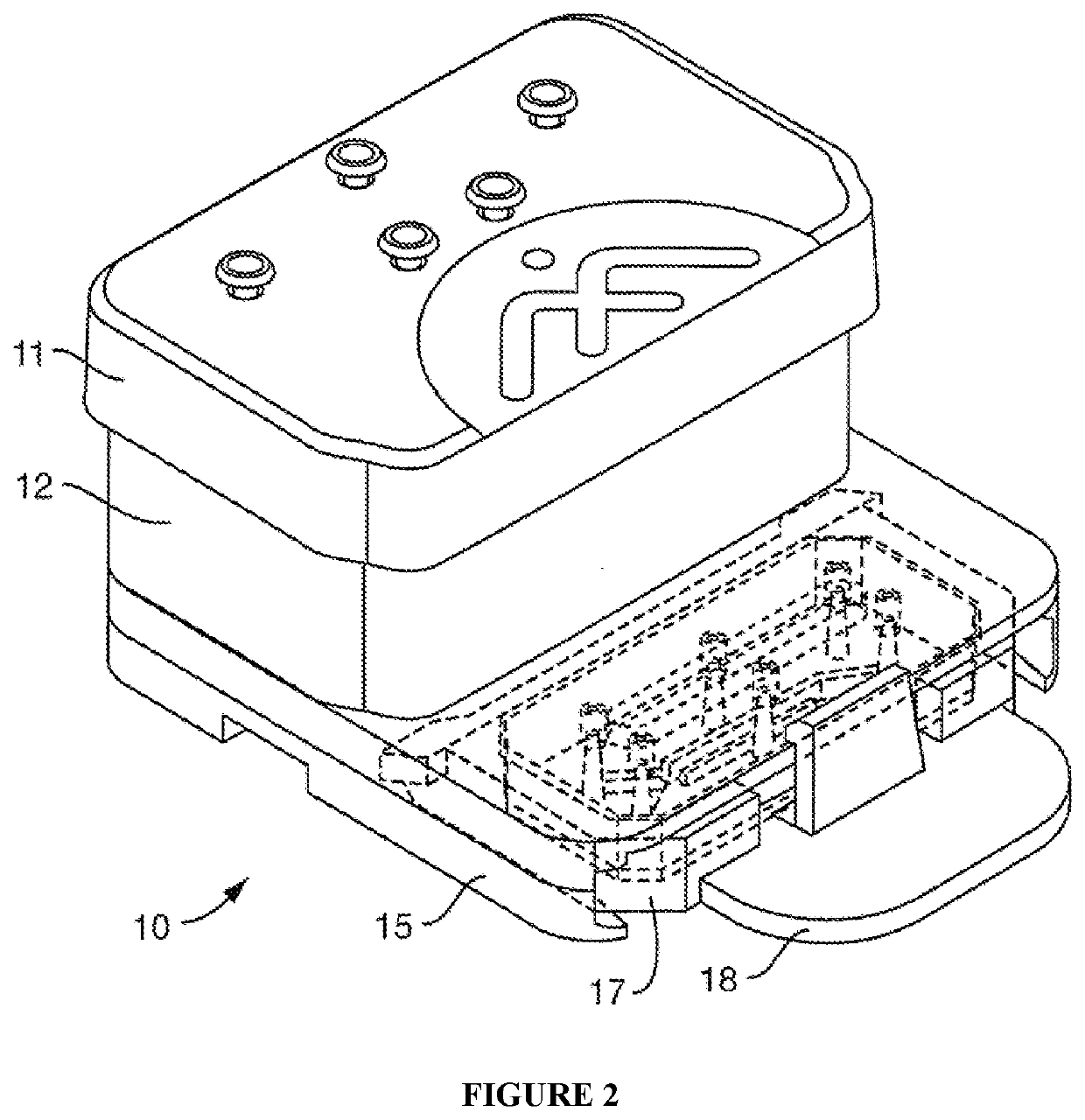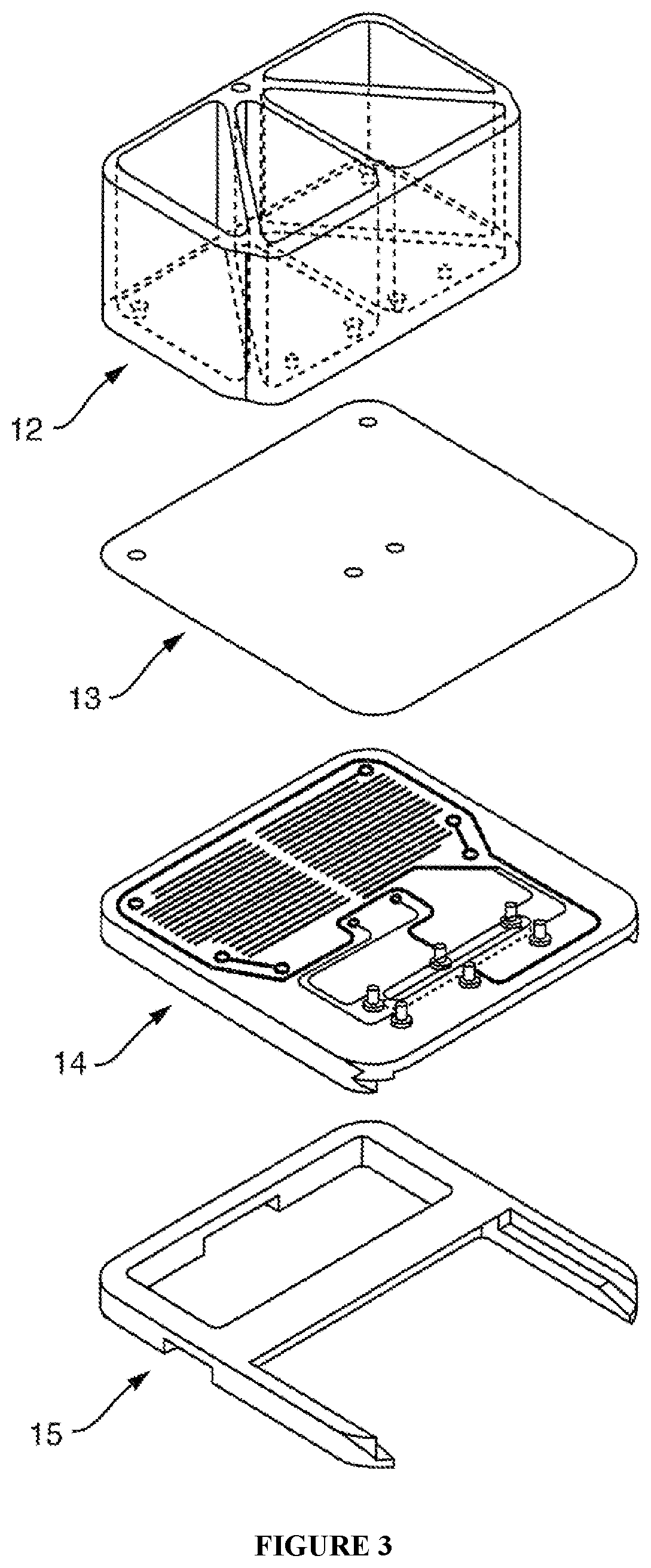Surface functionalization
a microfluidic device and functionalization technology, applied in the field of surface modification of microfluidic devices, can solve the problems of limited device materials and physical properties, and the use of microfluidic devices is used for multiple applications, so as to facilitate a wide range of flow rates, increase the channel height, and reduce the effect of shear
- Summary
- Abstract
- Description
- Claims
- Application Information
AI Technical Summary
Benefits of technology
Problems solved by technology
Method used
Image
Examples
example 1
General Process for One Embodiment of the Method
[0078]1) wet (e.g. flow in) crosslinker solution into the desired area[0079]2) expose with light of suitable wavelength and sufficient strength / exposure[0080]3) optionally wash (e.g. remove unreacted material)[0081]4) wet (e.g. flow in) hydrophobic / hydrophilic material with suitable chemical group[0082]5) incubate to allow for reaction[0083]6) optionally wash (e.g. remove unreacted material)
(See Example 2 for a specific protocol. See EXAMPLE 5 or Example 6 for an alternative process).
example 2
Surface Functionalization of Thermoplastics Using Sulfo-Sanpah
[0084]One embodiment of the surface functionalization process is described below:[0085]1. Take SS and make a 1 ml mg concentration using 50 mM Hepes.[0086]2. Apply SS on the surface of the COP (enough to completely cover surface).[0087]3. Place COP in UV Chamber and treat for 20 minutes.[0088]4. Aspirate SS and wash with 50 mM Hepes.[0089]5. Repeat steps 1-4.[0090]6. Apply TRIS on the surface of the COP (enough to completely cover surface).[0091]7. Leave COP overnight at 4′ C.[0092]8. Aspirate excess TRIS, result is COP coated with PEG or TRIS
[0093]Different parameters were also tested, such as higher concentrations of SS, longer treatment times, and multiple treatments. This protocol was tested using TRIS, but may also be used with any amine containing buffer. The methods above yielded the best result when measuring the water contact angle of the COP after treatment. See FIG. 8, which shows a droplet on an untreated COP,...
example 3
Surface Functionalization
[0094]In one embodiment, in order to bond with Sulfo-SANPAH in particular, any of the hydrophobicity modifying molecules need to include (or be modified to include) amine, as that is what SANPAH binds. For example, to bind PEG, we used amine-terminated PEG, e.g. Poly(ethylene glycol) 2-aminoethyl ether acetic acid or HO-PEG20K-NH2. Alternative crosslinkers can have other reactive groups, requiring the hydrophilic or hydrophobic material to provide a different functional group to react with the crosslinker.
PUM
| Property | Measurement | Unit |
|---|---|---|
| temperature | aaaaa | aaaaa |
| contact angles | aaaaa | aaaaa |
| contact angles | aaaaa | aaaaa |
Abstract
Description
Claims
Application Information
 Login to View More
Login to View More - R&D
- Intellectual Property
- Life Sciences
- Materials
- Tech Scout
- Unparalleled Data Quality
- Higher Quality Content
- 60% Fewer Hallucinations
Browse by: Latest US Patents, China's latest patents, Technical Efficacy Thesaurus, Application Domain, Technology Topic, Popular Technical Reports.
© 2025 PatSnap. All rights reserved.Legal|Privacy policy|Modern Slavery Act Transparency Statement|Sitemap|About US| Contact US: help@patsnap.com



